Baby food cover
A Healthy Baby Food Initiative
Download
the Report
Healthy Babies Bright Futures’ new study tested if homemade baby food is better than store-bought.
The troubling answer? Both were contaminated: 94% of both baby foods and homemade and “family” brands tested were contaminated with one or more of four toxic heavy metals. Heavy metal levels varied widely by food type, not by who made the food.
What did we find?
HBBF tested 288 foods - including popular baby foods like sweet potatoes, carrots, cereal, and bananas - and examined 7000+ additional food tests from other published studies. We found no evidence to suggest that homemade purees and family brands are generally safer, with lower metal levels, than store-bought baby food.
Our study includes a new parent’s guide of popular baby foods to serve, limit, and avoid, based on our tests.
- Four popular foods consumed by babies are so heavily contaminated by heavy metals that we recommend avoiding them altogether.
- Fourteen foods have little contamination and can be served freely.
- Twenty-two foods have moderate to relatively high amounts of heavy metals, to be eaten rarely or in rotation with other foods. For some of these foods, preparation matters — peeling and cooking can lower the heavy metal content.
Why does this matter?
Research continues to confirm risks for babies from these exposures to heavy metals, including lifelong deficits in intelligence. Despite the risks, with few exceptions there are no specific limits for toxic heavy metals in baby food.
FDA’s multi-year timeline to limit lead, arsenic and other heavy metals in baby food has significant repercussions for infants. Nearly 10,000 babies in the U.S. begin eating solid food every day. Each day that passes has an impact, as children ingest metals that harm neurological development.
What can be done?
The solution is a two-pronged “Kitchen and Country” approach. Until the FDA takes protective action on this issue, parents should choose and prepare foods in ways that significantly reduce babies’ exposures.
And the FDA should establish and enforce protective limits for heavy metals in all foods consumed by babies and young children — not just baby food brands but also fresh and family-style foods babies eat. Heavy metals contamination spans all the food aisles of the grocery store.
What You Can Do
6 Tips for Parents
Download the Data-Driven Guide to Better Baby Food
English PDF
Spanish PDF
Sign a Letter to the FDA Commissioner
Read HBBF’s 2019 Baby Food Study
Findings & Resources
Healthy Babies Bright Futures’ new study sought to find if homemade purees and foods purchased outside the baby food aisle have lower heavy metal levels than pre-made, store-bought baby food. To find the answer, HBBF tested 288 foods and examined 7,000+ additional food testing data from published studies.
To find the answer, HBBF tested 288 foods and examined 7,000+ additional food testing data from published studies.
We found no evidence to suggest that homemade baby food has lower heavy metal levels than store-bought brands. Heavy metal levels varied widely by food type, not by who made the food.
Our top findings were:
- 94% of all food samples we tested contained detectable amounts of toxic heavy metals: 94% of store-bought baby food, and 94% of homemade purees and family brand foods.
- Rice cakes and crisped rice cereal are heavily contaminated with arsenic. They contain higher levels of arsenic than any other foods tested. Both stand out as foods to avoid for children and adults alike.
- The 10 most heavily contaminated foods consumed by babies (beginning with the highest) are: rice cakes, crisped rice cereal, rice-based puffs, brown rice, teething biscuits and rice-based rusks, white rice, raisins, teething crackers (non-rice), granola bar with raisins, and oat-ring cereal.

- The 10 least contaminated foods consumed by babies, beginning with the lowest, are: banana, grits, baby food brand meats, butternut squash, lamb, apple, pork, eggs, oranges, and watermelon.
This is a complex problem and will require a multi-pronged solution for both our kitchens and our country.
The Kitchen Solution: Until foods with reliably low heavy metal levels are widely available, parents can choose and prepare foods in ways that significantly reduce babies’ exposures. The most important step: introduce and serve a variety of healthy foods, whether baby food brands or homemade foods. Serving the same food every day for a long time can accidentally concentrate one or more contaminants in a child’s diet. A varied diet avoids this and ensures a healthy mix of nutrients too. See our short parent’s guide for the full food list.
The Country Solution: FDA should establish and enforce protective limits for heavy metals in all foods consumed by babies and young children. Heavy metal contamination spans all the food aisles of the grocery store; FDA’s safety standards must as well. Standards extending beyond the baby food aisle would also encompass foods eaten during pregnancy , a crucial time for lowering toxic metal exposures.
Heavy metal contamination spans all the food aisles of the grocery store; FDA’s safety standards must as well. Standards extending beyond the baby food aisle would also encompass foods eaten during pregnancy , a crucial time for lowering toxic metal exposures.
Impact
“This report’s findings of heavy metals in many of the foods that families routinely feed their young children only adds to the stress families face. The best advice I give is to offer your child a variety of foods, every day. [It] will reduce the chance of your child consuming a higher concentration of heavy metals from any one food source.”
—Moira Szilagyi, MD, PhD, FAAP, president of the American Academy of Pediatrics
We expect the foods that babies consume to support their optimum health, growth, and development.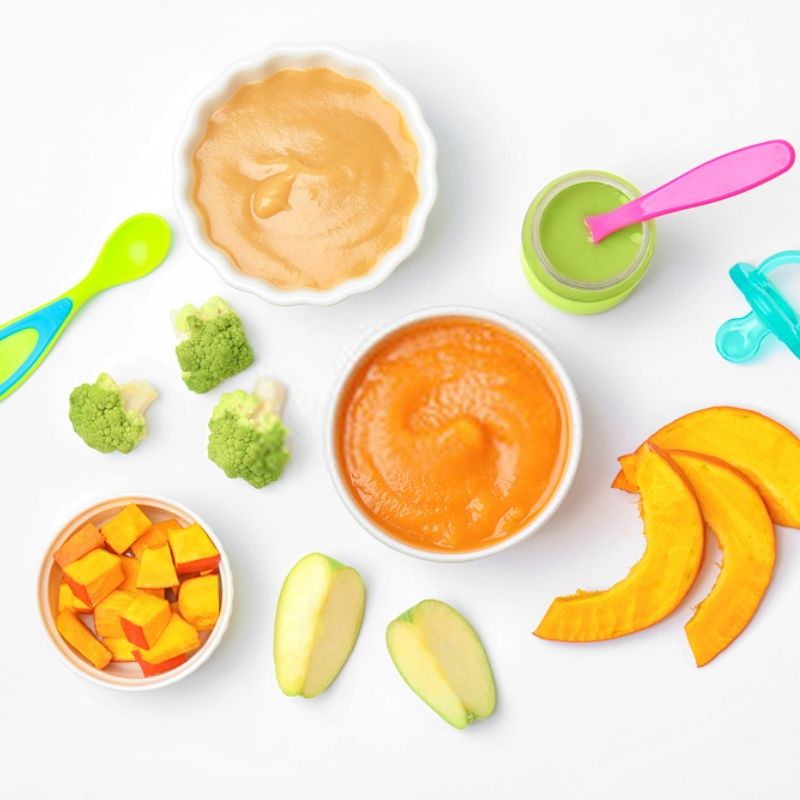 The presence of heavy metals in this study poses serious threats. Hopefully this inspires more parents and pediatricians to advocate for stronger environmental protections.
The presence of heavy metals in this study poses serious threats. Hopefully this inspires more parents and pediatricians to advocate for stronger environmental protections.
—Yolanda Whyte, MD and pediatrician
“FDA’s Closer to Zero program needs to live up to its name. This study shows that lead, arsenic, and other heavy metals are in all baby food brands, fresh produce, and packaged family brands. To get the levels of heavy metals meaningfully closer to zero, FDA must go beyond the baby food aisle and set strong standards for these contaminants.”
—Charlotte Brody, RN, National Director at Healthy Babies Bright Futures
“Parents shouldn’t have to worry about the safety of their babies’ meals and snacks, but until the FDA sets protective limits, the good news is that parents can skip and swap out certain foods to limit toxic chemical exposures.”
—Jane Houlihan, Research Director at Healthy Babies Bright Futures
“Every parent wants to protect their baby from neurotoxins, and unfortunately, they are a part of our daily environments.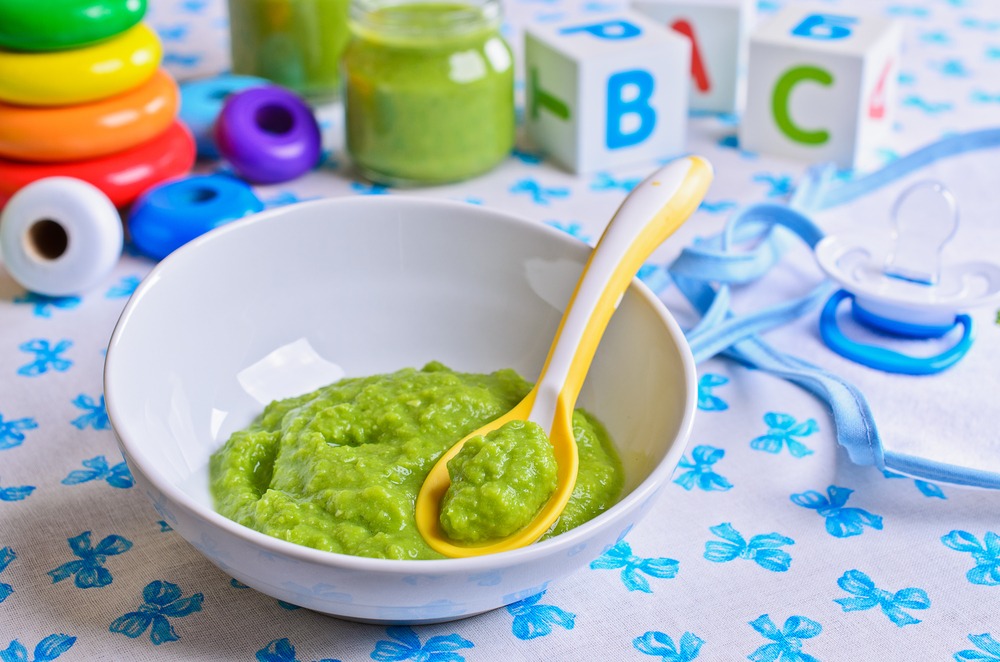 This research proves the need for policies that keep our children safe and ensure that every baby has access to safe and affordable food, without further taxing overburdened parents.
This research proves the need for policies that keep our children safe and ensure that every baby has access to safe and affordable food, without further taxing overburdened parents.
—Lottie Ferguson, Chief Resilience Officer, City of Flint, MI
Additional Resources
Baby Food Storage Containers (For All Budgets)
Find the best baby food storage containers in glass, BPA-free plastic, and stainless steel, with options for jars, containers, reusable pouches, lidded bowls and more. I’ve included options for all budgets that will last and last!
Baby Food Storage Containers
Make the most of all of that nutritious baby food—whether purees, BLW, or finger foods–with the best baby food storage container options. These will help you safely store food in the fridge and freezer, and give you options for packing for daycare, too.
Included in this post are containers made from glass, stainless steel, and BPA-free plastic. I have a mix of jars, bowls with lids, reusable bags, reusable pouches, and more so you can use what works best for your life and routine.
I have a mix of jars, bowls with lids, reusable bags, reusable pouches, and more so you can use what works best for your life and routine.
Best Glass and Ceramic Baby Food Storage Containers
Glass and ceramic storage containers are safe from any potential issues you may find with plastic, are easy to clean, are durable, and last for years. You can reuse them again and again without issue and they come in a range of sizes for storing baby food—and then kid food as the littles grow.
WeeSprout Jars
These jars, which come in both 4- and 8-ounce sizes, are amazingly useful. We’ve used them daily for over a year and have never had an issue with them. They are easy to clean, the lids screw on tightly, and they are incredibly durable.
AIGI Ceramic Containers
These ceramic containers are another wonderful option, especially for storing slightly larger portions. They are great for leftovers, meal-prepping, and even serving the baby food as a bowl.
How to Freeze Baby Food
Freezing baby food, whether as a way to store leftovers or as a way to batch cook it, is easy and helpful. You can simply add the baby food to an ice cube tray, freeze the cubes, then transfer the cubes to a freezer bag for longterm storage.
You can simply add the baby food to an ice cube tray, freeze the cubes, then transfer the cubes to a freezer bag for longterm storage.
To thaw, place 1-2 cubes (or more, according to the portions your baby is eating) in a container in the fridge overnight.
You can also freeze baby food in reusable pouches.
Favorite Reusable Pouches for Baby Food
Reusable pouches are a great way to store baby food in both the fridge and the freezer. There are a lot of options and my favorite ones are below.
Squeasy Gear
This has long been one of my favorite baby feeding products as it’s one of the few reusable pouches that doesn’t come with the possibility of a mess—there’s a little guard that prevents baby from squirting out the food (whether on purpose or by accident).
It’s easy to clean, comes in a few different sizes (we like to start with the 3.5 ounce one) and can store baby food in the fridge or freezer.
Weesprout Reusable Pouches
BPA-free plastic pouches are easy to fill (they fill from a zipper that opens and closes along the bottom) and store wonderfully in the fridge and freezer. This is a helpful way to portion out baby food and have it ready to go.
This is a helpful way to portion out baby food and have it ready to go.
To wash, remove the screw-top and open the bottom. Let water run through and use a small bottle brush as needed to clean. Prop open to dry on a bottle drying rack.
Best Baby Food Bowls with Storage Lids
Having a bowl or two with a tight fitting lids means that it’s easy to serve and store baby food in the same container. These silicone bowls from WeeSprout are a great option that you can use throughout childhood. They’re easy to clean and are freezer and dishwasher safe.
Favorite BPA-Free Plastic Baby Food Containers
With all of the options for plastic containers on the market, it can be hard to know which ones really last. My two favorite are below, which I recommend after 6 years of real-life testing. These are the only two brands that have held up to repeated washings and haven’t scratched easily.
Beaba Clip Containers
These containers, which come in a few sizes so you can use the one that fits your purpose, stack for easy storage.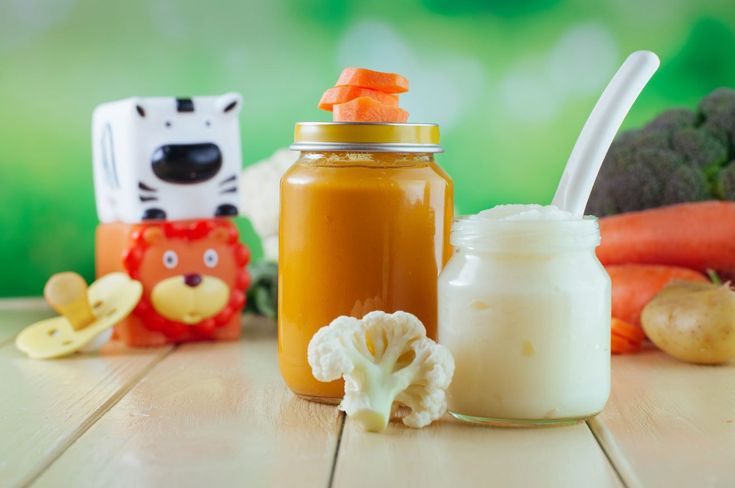 They are easy to clean and made from a safer type of plastic. The lids screw on tightly enough to store liquids and purees.
They are easy to clean and made from a safer type of plastic. The lids screw on tightly enough to store liquids and purees.
They’re also great for finger foods.
Replay Recycled Snack Stackers
These colorful containers are great for snacks and also for storing food in the fridge or pantry. They are made from recycled milk jugs and twist together for easy storage.
Best Stainless Baby Food Containers
Stainless is a great option for food storage since it’s a safe material that tends to be very durable. It’s also very easy to clean. The downside is that you can’t heat food in this container, so you’d have to transfer it to another if you need to warm it up. My favorite options are below.
WeeSprout Stainless Food Containers
Sold in a set of three, these stainless containers come with tight-fitting silicone lids. They are perfect for storing any type of baby food and are safe in the fridge, freezer, and dishwasher.
Everusely Stainless Containers
Sold as containers for salad dressing, these stainless containers are actually a great size for baby food at just under 2 ounces. And then you can use them for years to come!
And then you can use them for years to come!
Frequently Asked Questions
Is it better to store baby food in glass or plastic?
You can use either. If using plastic, look for BPA-free plastic and avoid putting it into the microwave or dishwasher to help the plastic stay in tact. Discard it if you see any scratches.
What is the best way to store homemade baby food?
You can store homemade baby food in the fridge in small containers for up to 5 days, or you can freeze it in reusable pouches or in ice cube trays. If doing ice cube trays, transfer the frozen cubes to a freezer bag for longer term storage.
Is it safe to store baby food in plastic containers?
It can be. Look for BPA-free plastic and avoid putting it into the microwave or dishwasher to help the plastic stay in tact. Avoid acidic food like citrus or tomato-based foods, as those can break down the material, too. Discard it if you see any scratches.
Discard it if you see any scratches.
Best Tips for Success
- Care for your storage containers according to manufacturer’s directions.
- To lengthen the life of BPA-free plastic, hand wash it rather than putting it into the dishwasher.
- Let dry fully before storing.
- Check out my fav Snack Containers for more food storage options.
Related Recipes
I’d love to hear your feedback on this post, so please comment below to share!
Spouts and lids for flexible packaging
Assembly (Spout + Lid)
The ideal solution for forming finished packaging from GUALAPACK laminate and assembling GUALAPACK on your bottling line. The following polyethylene assembly options are available: BrickCap® + 8.6 mm spout; BabyCap® + spout 8.6 mm; WavyCap + spout 8.6 mm; Standard Cap + spout 8.6 mm; Animal Cap + spout 8.6 mm.
Learn more
Standard lid
The ideal solution for all types of packaging. Suitable for all markets of use, except for the children's line, where BabyCap™ is the main requirement.
Learn more
BabyCap®
BabyCap® is the world standard for caps used with baby food bags. The cap prevents the risk of suffocation, has a diameter of 33 mm and holes to allow breathing if swallowed.
The BabyCap® fits 8.6 mm and 14 mm baby food spouts and is available in polyethylene or polypropylene depending on product requirements.
Learn more
WavyCap
An upgraded version of the BabyCap®, the WavyCap guarantees the same choking protection, with a 33 mm diameter and holes that allow breathing if swallowed. The cap fits spouts with a diameter of 8.6 mm and is available in polyethylene or polypropylene.
Learn more
BabyCap+
The baby food cap has a special protection against unauthorized opening. This is very important when the product is on the shelf - the cap guarantees the integrity of the product and protection against manipulation and counterfeiting.
BabyCap + will tell you if the package is already open.
Learn more
BrickCap®
In addition to safety and quality, BrickCap offers a completely new feature: once used, the cap turns into a construction game that allows children to build 3D objects.
BrickCap raises the bar for sustainable packaging, reuses and gives a “second life” to the conventional flexible packaging cap. BrickCap can be made from polyethylene or polypropylene depending on customer requirements.
Learn more
Tethered Cap
The Tethered Cap technology complies with the Single Use Plastics Directive. The design consists of attaching the lid to the spout so that it does not get lost and pollute the environment. The fixed cap can be installed on all Gualapack bottling lines with a special cap set (available for new and existing lines). The tie-down lid is available in polypropylene and polyethylene and can be used for hot filling, cold filling and post-heating autoclaving. Fits all Gualapack bags with 8.6mm spout. Two options are available: Standard Cap and Mood Cap.
Learn more
Spin Cap
The Spin Cap is a collectible polyethylene or polypropylene cap that can be reused for play. The variety of designs and bright colors are suitable for children ages 3 and up to play and make your products stand out from the competition.
Learn more
Cereal Cap
Cap for bulk products and powders. One-piece cap that is made of polyethylene and reduces the amount of material used for manufacturing (compared to two-piece caps). This packaging is very convenient to use, because it can be easily opened and closed with one hand.
In addition, Cereal Cap uses tamper-evident technology to ensure package integrity and product protection.
Learn more
Monopiece Cap
An economical and easy-to-use cap that can be easily opened thanks to the breakable membrane and re-closed later. Designed for FFS filling machines, available in polyethylene and polypropylene.
Learn more
Spouts
All of our spouts fit our caps perfectly and are constantly being improved to ensure perfect screwing and product safety inside.
Learn more
Customized lid or spout
If you can't find the right type of product, please contact us.
Our R&D team can help you develop a customized solution for your business needs.
Learn more
Product benefits
High quality finished product
Safe and hygienic
Long shelf life
Recyclable functionality and features. Speaking about the growing range, we are not limited to discussing colors and shapes. The type of cover itself largely affects whether it will be convenient for the consumer to use your products.
Spouts and lids for flexible packaging reliably protect the contents of the package from external influences. Depending on the type of product, a cap is selected. At the moment, manufacturers are actively using options such as:
- baby food lids
- light spout lid
- tamper evident lid
- fruit puree lid
- pharmaceutical lid
- suspension lid 9010 sauce
- cover for juice
- cover for condensed milk
- Paste cover
- Drink cover
- Dairy products
- lid for yogurt 90 baby food cap
- fruit puree cap
- sauce cap
- pasta cap
- milk cap
- cap for confectionery mixtures
- cap for prepared meals, etc.

Spouts and lids for Gualapack flexible packaging come in a variety of styles.
In our range you will find:
- standard cap
- BabyCap, which is recommended for use by baby food manufacturers as it prevents possible suffocation
- WavyCap, which is a more functional version of the BabyCap
- BabyCap+ or tamper evident cap
- BrickCap, which can be transformed into a construction set and still remain completely safe
- CerealCap for bulk and powdery products
- Monopiece Cap for filling machines
- spouts
- personalized caps, if the option you need is not in our assortment Do you have any questions?
- 1 Small lights. This is a great idea for any party. Apply some hot glue using a hot glue gun to the bottom of a thin cone-shaped candle. Then stick it inside the jar. Then add some fresh flowers and fill 1/3 with water. Water keeps the flowers fresh longer and they will smell nice when the candle is burning. When guests arrive, light candles.
- 2 Small snowballs. They turn out very beautiful and you can keep them for a long time. Apply hot glue to the bottom of the lid and leave for an hour until completely dry. Then put 1 teaspoon of glitter into the jar and add water to it. Attach the lid to the jar and you're done! You can make similar snowballs using other decorations, for example, small figures, trees with artificial snow.
 Turn on your imagination and make your own original snowball!
Turn on your imagination and make your own original snowball! - 3 Hanging flower vase. Fill the jar halfway with glitter balls. Add 3/4 of the water. Then place a fresh rose inside. Then wrap two 40 cm wires around the neck of the jar to make a hanging hook. Now you can hang vases everywhere: along with a garland on a Christmas tree or on a staircase.
- 4 Candy decoration. Fill the jar with various colored candies. Then use hot glue to attach a matching color cupcake pan to the edges of the jar lid. Glue the candy to the center of the mold or decorate it as you like.
-
in general, we made snow globes out of them - we attached Kinder toys to the lid from the inside, and poured glycerin or just boiled water + all sorts of sparkles into a jar,
then twisted this thing and voila! it is better to pour glue on the lid, where the thread is, so that they do not leak. The amount of liquid was determined experimentally))) I like water more - sparkles fly quickly, and in glycerin they hang for a week)))) - I, here, just adapted them for the spice.
 Very comfortably! They are transparent, you can see everything in them. Large jars (for example, from fruit nanny_cream) are for such spices, of which I get a lot. And the little ones are for the little ones. True, I have a lot of spices (I cook often and a lot - my family is big) I am also a tea drinker. I have a lot of different teas, there are expensive ones, which are quite a bit, so, it’s them that I pour into these jars, again (in large, Frutonyanevsky ones). I also make candles out of them) For example, it turns out pretty cool for chlowin) The whole apartment was lined with them. It turns out beautifully if you pour half a jar of water into a jar, and there a small round candle floats. And safe and beautiful :) Also all sorts of sewing little things - buttons, pins, small needles (I also have an unmeasured amount of them), clamps, zippers, in general, sewing accessories.
Very comfortably! They are transparent, you can see everything in them. Large jars (for example, from fruit nanny_cream) are for such spices, of which I get a lot. And the little ones are for the little ones. True, I have a lot of spices (I cook often and a lot - my family is big) I am also a tea drinker. I have a lot of different teas, there are expensive ones, which are quite a bit, so, it’s them that I pour into these jars, again (in large, Frutonyanevsky ones). I also make candles out of them) For example, it turns out pretty cool for chlowin) The whole apartment was lined with them. It turns out beautifully if you pour half a jar of water into a jar, and there a small round candle floats. And safe and beautiful :) Also all sorts of sewing little things - buttons, pins, small needles (I also have an unmeasured amount of them), clamps, zippers, in general, sewing accessories. - I then kept frozen food for children in them. Well, i.e. for example, she put out the meat, partly ate, partly in jars.
 Next time I'll just take out a jar.
Next time I'll just take out a jar. - 1. as candle holders
2. for storing spices (I have a lot of them)
3. the largest baby food jars are great for storing small bulk groceries - leftover noodles with "asterisks", semolina and buckwheat groats for one time and etc., when you already want to throw out the package.
4. for nails, screws, etc.
5. Hooks or spare hooks sometimes fall off curtains.
6. homemade sauces there and in the refrigerator. The same goes for homemade ricotta. just one serving for 1-2 people.
7. It is convenient to freeze concentrated broths (kate-grigoryeva.livejournal.com/391933.html)
8. If there is leftover frying for soup - also in a jar and in the freezer.
9. for analysis.
10. for needles and threads I have a large whiskey tube, but in it the needles were pricked if they bumped into the pads, so in a jar - a small pad, and needles in it, now nonsense.
11. I have expensive creams, handmade from natural materials, they are best stored in the refrigerator if long-term storage is expected (and I foolishly bought large jars). but it’s not always convenient to run from the bathroom to the kitchen, and climbing into a large jar every day is not always good for the contents, so I throw the cream into a jar for myself for a few days, and screw it into the bathroom in a refrigerator bag.
but it’s not always convenient to run from the bathroom to the kitchen, and climbing into a large jar every day is not always good for the contents, so I throw the cream into a jar for myself for a few days, and screw it into the bathroom in a refrigerator bag.
12. Husband and son were furious, gouged a plastic jar with make-up remover, the toad strangled them to throw it away, poured the contents into a jar of baby food and put it away from them.
13. If boiled meat or chicken for soup needs to be stored somewhere, but there are already too few of them for a plastic container, then a large jar for baby food is what you need.
14. If you peeled a potato too large for a child for 1 time, the pieces can be poured with water in a jar and left for a day, only the excess starch will be washed out. - 15. I completely forgot - I have calcined vegetable oil for the body in such a jar - at first I did it for my son, now for myself, sometimes it is necessary for cosmetic or massage purposes.

16. more buttons! all in the same tube from under the whiskey -)))) what for, only I keep the buttons, but suddenly they will be required. ))) - Used for creativity - vases were made by sticking around with salt dough or simply painted.
- I helped Russian culture: I washed cans and gave the artist a friend of 50-70 pieces at a time. they really need those paint cans. and she, in turn, supplied them to all her colleagues in the restoration workshop. everyone was happy :)
- I store cereals (rice, buckwheat, semolina) in large jars from the National Academy of Sciences (tin) ... It’s also convenient, although it doesn’t decorate the interior)))
- jar lids were asked for in kindergarten. They made a massage track there with their own hands. They sewed on a piece of leatherette - lids from cans, then from bottles, then buttons, and some other trifle. And the children ran barefoot after sleep and massaged their feet.
- Our dad sealed jars of mixture and baby tea with oracal (multi-colored sticky film) and made inscriptions on them also from oracal.
 Now the interior is not spoiled, we store in them a magnetic designer, pencils, prints for children's creativity and any small things, very convenient.
Now the interior is not spoiled, we store in them a magnetic designer, pencils, prints for children's creativity and any small things, very convenient. - Jars can be used for needlework, for example, buy transparent pebbles in Ikea and glue them on, such small vases look very nice on the shelves: 4u: You can also glue colored self-adhesive paper and use it for some little things! You can use gold or silver spray paint cover and insert small spruce twigs - this is for the New Year! And a lot more how you can use jars in design, the main thing is a creative approach
I close homemade ketchup in them Very convenient; opened and immediately ate everything
- I pack honey in them - my husband is too lazy to put it in a special bowl, and it dries there - and then he will eat it from the jar and throw it away. it doesn't need to be airtight. And if it gets sugary, it's convenient to heat it in the microwave. I pour
- coffee to my husband at work, I also grumble - at least I brought one back
lids are used as a basis for pictures, studying colors or letters and numbers - it is very convenient to use such a method.
 Material, children like it very much!
Material, children like it very much! all sorts of small crafts were covered with jars - from plasticine, for example, so that they would not gather dust
we play with lids :) but this is 5-10 lids maximum
I only make thick strawberry jam with whole berries from preparations in the summer - since you can’t eat a lot of it at a time, but when I eat it, I eat up for a week, at least, then how since the 100-gram package suits me just fine. I make 20 jars (2 liters of jam) in the summer, and with this my genetic Russian craving for preparing all kinds of pickles and jams is quenched for a year. In the first one, they make something beautiful out of cans - they seem to be painting on glass, so they constantly need new ones, and in kindergarten they need it to stupidly rinse the brushes
Girls, we need a lot of food jars for the printing house. To whom it is not a pity, give. We have a silk-screen printing workshop, the printer mixes paints in them. Now he came and asked if I had it, but I had already thrown them all away
to a familiar veterinarian, otherwise dog and cat owners bring them tests in matchboxes :-D and it is supposed to be taken only in glass containers.
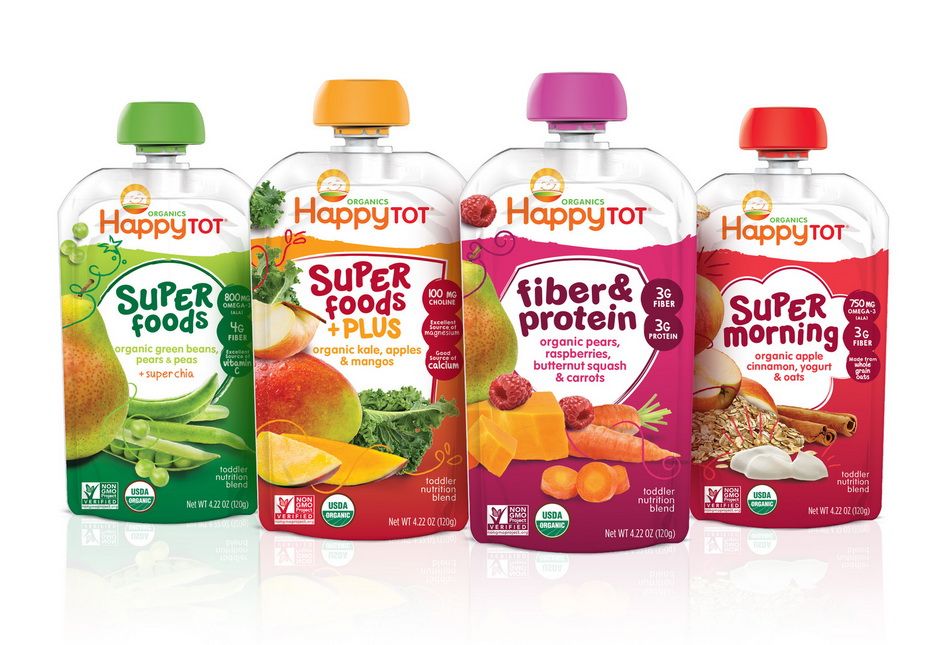
Find out more about caps for packaging your products
I agree with the privacy policy and give permission for the processing of my personal data.Your message has been sent!
Our managers will contact you shortly.
Thank you for your interest in Gualapack products
Contact now
I agree with the privacy policy and give permission for the processing of my personal data.
Your message has been sent!
Our managers will contact you shortly.
Thank you for your interest in Gualapack products
Contact us
I agree with the privacy policy and give permission for the processing of my personal data.Your message has been sent!
Our managers will contact you shortly.
Thank you for your interest in Gualapack products
crafts made from baby food caps - 10 recommendations on Babyblog.ru
* Baby puree jars - a second life!
1) Banal and standard use of these jars for tests . Any mother knows how many such jars are required during pregnancy (every two weeks for 9 months). If you have a friend who is expecting a baby, share jars with her. Do a good deed.
2) Jars for various spices (dried dill, celery, meat seasoning, etc.). You can stick the name of the seasoning on each jar for convenience. And you can show imagination and do the following.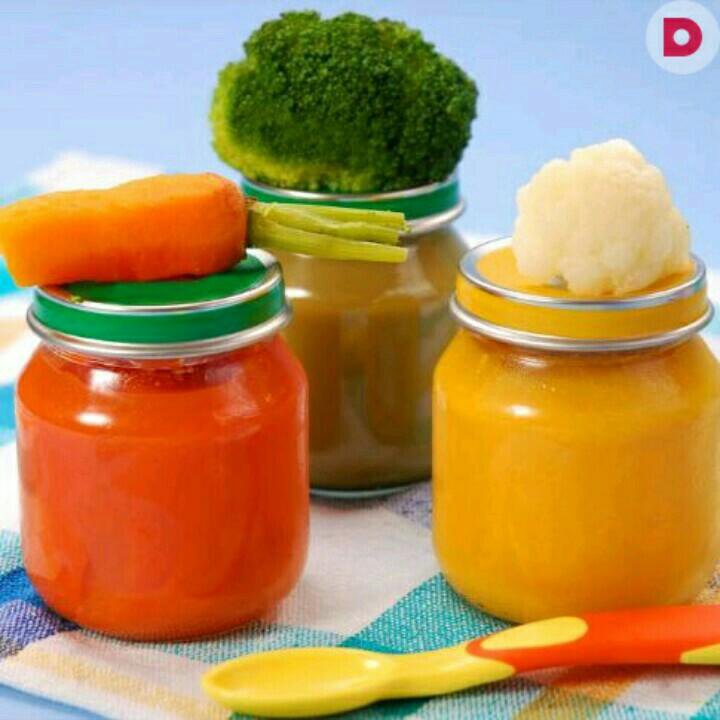 You need for decoration : paper or newspaper, paste, brush, black peppercorns, bay leaf for decoration, varnish.
You need for decoration : paper or newspaper, paste, brush, black peppercorns, bay leaf for decoration, varnish.
Tear paper apart. Paste the jar in 7-10 layers. Let dry.
Cover the puree jar with paint. Let dry again.
You can simply paint with gouache. Let dry and varnish.
And for decoration, you can grease an unpainted puree jar with glue and sprinkle with peppercorns, glue bay leaves - you get a pattern. Let dry and varnish. Get a very beautiful papier-mâché.
3) Handy jars for jam and honey . For example, wear to work.
You can make preparations for the baby in such jars for the winter (juice, fruit, compote, etc.). A very handy portion. Wash the jars, sterilize, boil the lids, twist the hot puree, turn over and wrap.
4) Jars for medicinal and herbal teas .
5) Jars for children's art - beads, beads, colored sand, pebbles, mosaics, etc. Instead of colored sand, you can make colored salt if treated with a gouache solution. Pour a layer of sand or salt of different thicknesses into a jar and make a beautiful composition.
Instead of colored sand, you can make colored salt if treated with a gouache solution. Pour a layer of sand or salt of different thicknesses into a jar and make a beautiful composition.
6) Jars for men's creativity - screws, studs, buttons, bolts. nuts, etc.
7) Decorative jar . For example, to the cottage. We will need: glue, paper, scissors and a can of puree.
The first way. We cover the jar with a paste and carefully stick colored paper on top in size around. You can also use pictures made on a computer and printed on thin paper, including photographs. You can also decorate the lid.
The second way is to cover the puree jar with paper, paint or make an inscription.
Glitter or beads can be sprinkled on top of the paint. Let dry and varnish. You can use special adhesive paints. Also cover the lid with glue paint and sprinkle with beads or glue a piece of beautiful velvet fabric.
The third way. You will need: paper or newspaper, paste or wallpaper paste, paints, varnish. You need to tear the newspaper into small pieces. Paste the jar with pieces of paper in several layers (8-12 layers). Let dry. Paint, let dry again and varnish.
You will need: paper or newspaper, paste or wallpaper paste, paints, varnish. You need to tear the newspaper into small pieces. Paste the jar with pieces of paper in several layers (8-12 layers). Let dry. Paint, let dry again and varnish.
There are also special paints for glass.
8) Large puree jar (250 gr) - pencil and pen holder . You can also make decor as in paragraph number 7.
9) Can torch .
You will need: colored corrugated paper, PVA glue or do-it-yourself paste, a candle-tablet, a jar of puree string. You need to tear the paper into small pieces. Glue the jar on all sides with overlapping paper scraps, smearing only the middle of the pieces with glue. Get a "hairy" application. Then wrap the neck with a string to make a long handle for which you can hold a flashlight without fear of getting burned. Drip the wax into the bottom of the jar and place the candle. You can light a candle in a deep jar with fireplace matches.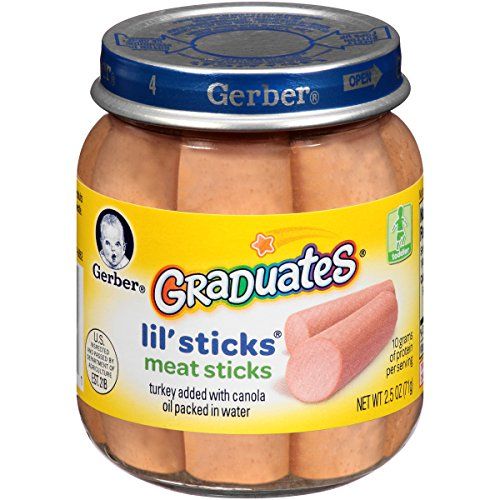
10) Decorative candle . We fill an empty jar with a special candle gel.
11) Ashtray . You can also make decor (item No. 7)
12) Can for small change . Write on it: "A penny saves a ruble!"
13) Small box . Do not forget to decorate as described under paragraph No. 7
Author: Rosa Nizhel
__________________________
* In winter you can take jars outside. Make a lump of snow and stick with jars. Here are the ears, eyes, and we will also make a nose for the snowman. Well, that's enough fantasy.
* Since I am fond of beading and from time to time I weave something, I poured beads into jars (because I have a lot of them), and so, by colors, it’s convenient. I also store flower seeds in these jars. I took a lot of jars to work.
* and I froze my milk, expressed ...
* if you make two holes in the lid and screw it with self-tapping screws to the bottom of the shelf, then you can screw the jar onto the lid after pouring, for example, spices into it. they will be fine hang and not take up space on the shelf. why two holes? so that the lid does not scroll.
they will be fine hang and not take up space on the shelf. why two holes? so that the lid does not scroll.
* and I used them to make an omelette for a child (now they have switched to half a liter, the portion has become larger). And convenient (no need to stand and watch), and more useful than in a pan (steam is obtained), and easy, and fast, tasty, etc.
In short - take a jar from under the food (preferably 190 g), drive in 1 egg, salt or saline solution (you can without it), stir well with a fork (you can in a plate, and then pour it into a jar) add almost to the top (a little more 2/3 jars) with baby milk, mix everything, cover with a lid (so that water does not accidentally get in) and put in a pot of water (water level according to the level of the omelette). At the bottom of the pan, be sure to put a small cotton cloth under the jar. And that's it - periodically stir and do other things. It is only better to put in cold or warm water, because. The glass may break due to the temperature difference.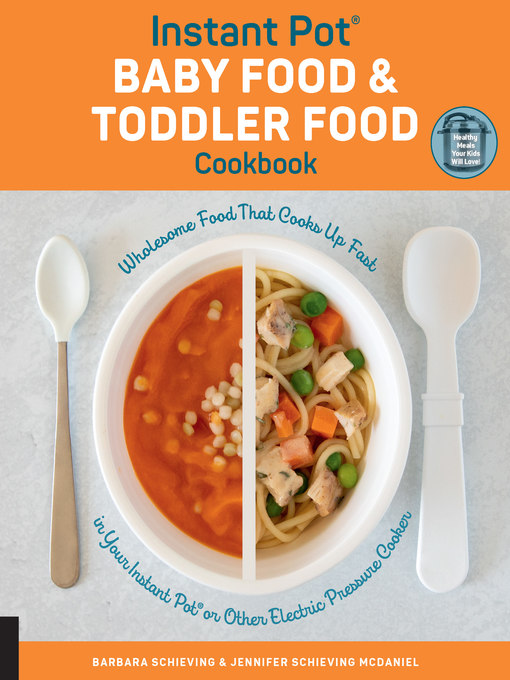 I also took such an omelet on the road, to nature, to the country. Such a jar is placed in a thermos from a baby bottle, and in a thermos with a wide mouth (but you can’t keep it in a thermos for a long time), and so - for half an hour until you reach your destination. And I threw away the jars after the omelet ....
I also took such an omelet on the road, to nature, to the country. Such a jar is placed in a thermos from a baby bottle, and in a thermos with a wide mouth (but you can’t keep it in a thermos for a long time), and so - for half an hour until you reach your destination. And I threw away the jars after the omelet ....
*











